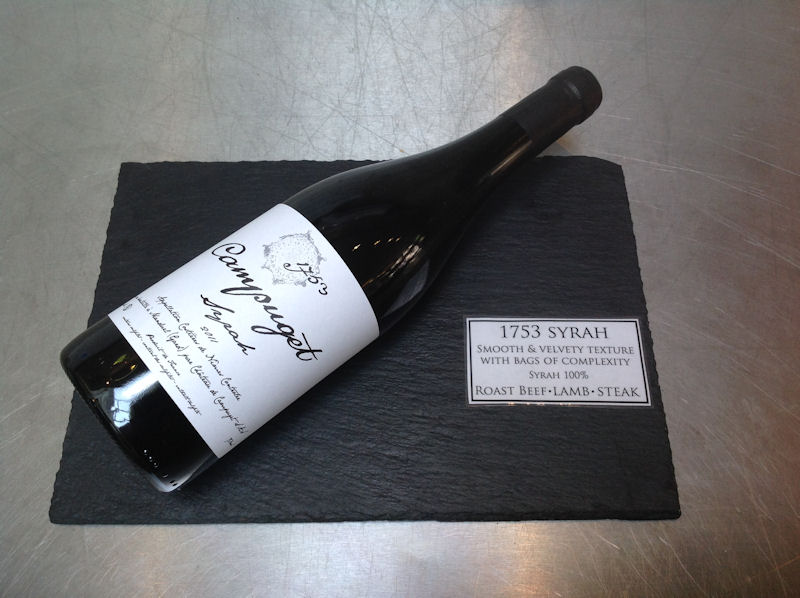Wine recommendation
Wine is a popular and important beverage that accompanies and enhances a wide range of cuisines, from the simple and traditional to the most sophisticated and complex. Wine is important in cuisine not just for its value as a beverage, but as a flavour agent, primarily in stocks and braising, since its acidity lends balance to rich savoury or sweet dishes. Wine sauce is an example of a culinary sauce that uses wine as a primary ingredient. Natural wines may exhibit a broad range of alcohol content, from below 9% to above 16% ABV, with most wines being in the 12.5% - 14.5% range. Fortified wines (usually with brandy) may contain 20% alcohol or more.
Wine tasting descriptors:
Wine tasting is the sensory examination and evaluation of wine. Wines contain many chemical compounds similar or identical to those in fruits, vegetables, and spices. The sweetness of wine is determined by the amount of residual sugar in the wine after fermentation, relative to the acidity present in the wine. Dry wine, for example, has only a small amount of residual sugar.
Some wine labels suggest opening the bottle and letting the wine "breathe" for a couple of hours before serving, while others recommend drinking it immediately. Decanting (the act of pouring a wine into a special container just for breathing) is a controversial subject among wine enthusiasts. In addition to aeration, decanting with a filter allows the removal of bitter sediments that may have formed in the wine. Sediment is more common in older bottles, but aeration may benefit younger wines.
During aeration, a younger wine's exposure to air often "relaxes" the drink, making it smoother and better integrated in aroma, texture, and flavour. Older wines generally "fade" (lose their character and flavour intensity) with extended aeration. Despite these general rules, breathing does not necessarily benefit all wines. Wine may be tasted as soon as the bottle is opened to determine how long it should be aerated, if at all.
When tasting wine, individual flavours may also be detected, due to the complex mix of organic molecules (e.g. esters and terpenes) that grape juice and wine can contain. Experienced tasters can distinguish between flavours characteristic of a specific grape and flavours that result from other factors in winemaking. Typical intentional flavour elements in wine - chocolate, vanilla or coffee, are those imparted by aging in oak casks rather than the grape itself. Vertical and horizontal tasting involves a range of vintages within the same grape and vineyard, or the latter in which there is one vintage from multiple vineyards.
Banana flavours (isoamyl acetate) are the product of yeast metabolism, as are spoilage aromas such as sweaty, barnyard, band-aid (4-ethylphenol and 4-ethylguaiacol), and rotten egg (hydrogen sulfide). Some varietals can also exhibit a mineral flavour due to the presence of water-soluble salts as a result of limestone's presence in the vineyard's soil.
Wine aroma comes from volatile compounds released into the air. Vaporization of these compounds can be accelerated by twirling the wine glass or serving at room temperature. Many drinkers prefer to chill red wines that are already highly aromatic, like Chinon and Beaujolais.
The ideal temperature for serving a particular wine is a matter of debate, but some broad guidelines have emerged that will generally enhance the experience of tasting certain common wines. A white wine should foster a sense of coolness, achieved by serving at "cellar temperature" (13 °C [55 °F]). Light red wines drunk young should also be brought to the table at this temperature, where they will quickly rise a few degrees. Red wines are generally perceived best when served chambré ("at room temperature"). However, this does not mean the temperature of the dining room often around (21 °C [70 °F]), but rather the coolest room in the house and, therefore, always slightly cooler than the dining room itself. Pinot noir should be brought to the table for serving at (16 °C [61 °F]) and will reach its full bouquet at (18 °C [64 °F]). Cabernet Sauvignon, zinfandel, and Rhone varieties should be served at (18 °C [64 °F]) and allowed to warm on the table to 21 °C (70 °F) for best aroma.
 |
 |
 |
 |
 |
 |
 |
 |
 |
 |
 |
 |
 |
 |
 |
 |
 |
 |
 |
 |
 |
 |
 |
 |
 |
 |
 |
 |
 |
 |
A little history of wine:
Archaeological evidence has established the earliest-known production of wine from fermenting grapes during the late Neolithic or early Chalcolithic in the Caucasus and the northern edge of the Middle East. An extensive gene-mapping project in 2006 analyzed the heritage of more than 110 modern grape cultivars, narrowing their origin to a region of Georgia. This matches the earliest discovered sites containing shards of wine-stained pottery, dated to c. 6000 BC in Georgia, and c. 5000 BC in Iran. The jars at the northwestern Iranian site already showed treatment with preservative turpentine pine resin, the flavouring of modern retsina. By c. 4500 BC, wine production had spread to Grecian Macedonia, the site of the first recovered crushed grapes, and an entire winery was discovered in 2011 inside the Areni-1 cave in Armenia, dated to c. 4100 BC.
A 2003 report by archaeologists indicates a possibility that grapes were mixed with rice to produce mixed fermented beverages in China in the early years of the seventh millennium BC. Pottery jars from the Neolithic site of Jiahu, Henan, contained traces of tartaric acid and other organic compounds commonly found in wine. However, other fruits indigenous to the region, such as hawthorn, cannot be ruled out. If these beverages, which seem to be the precursors of rice wine, included grapes rather than other fruits, they would have been any of the several dozen indigenous wild species in China, rather than Vitis vinifera, which was introduced there some 6,000 years later.
The spread of wine culture westwards was most probably due to the Phoenicians who spread outward from a base of city-states along the Lebanese and Israeli coast. The wines of Byblos were exported to Egypt during the Old Kingdom and then throughout the Mediterranean. Evidence includes two Phoenician shipwrecks from 750 BC discovered by Robert Ballard, whose cargo of wine was still intact. As the first great traders in wine (cherem), the Phoenicians seem to have protected it from oxidation with a layer of olive oil, followed by a seal of pinewood and resin, again similar to retsina.
Literary references to wine are abundant in Homer (8th century BC, but possibly relating earlier compositions), Alkman (7th century BC), and others. In ancient Egypt, six of 36 wine amphoras were found in the tomb of King Tutankhamun bearing the name "Kha'y", a royal chief vintner. Five of these amphoras were designated as originating from the king's personal estate, with the sixth from the estate of the royal house of Aten. Traces of wine have also been found in central Asian Xinjiang in modern-day China, dating from the second and first millennia BC.
Pressing wine after the harvest; Tacuinum Sanitatis, 14th century. The first known mention of grape-based wines in India is from the late 4th-century BC writings of Chanakya, the chief minister of Emperor Chandragupta Maurya. In his writings, Chanakya condemns the use of alcohol while chronicling the emperor and his court's frequent indulgence of a style of wine known as madhu.
The ancient Romans planted vineyards near garrison towns so wine could be produced locally rather than shipped over long distances. Some of these areas are now world renowned for wine production. The Romans discovered that burning sulfur candles inside empty wine vessels keeps them fresh and free from a vinegar smell. In medieval Europe, the Roman Catholic Church supported wine because the clergy required it for the Mass. Monks in France made wine for years, aging it in caves. An old English recipe that survived in various forms until the 19th century calls for refining white wine from bastard—bad or tainted bastardo wine.






